The way food businesses operate has changed dramatically in recent years, with traditional brick-and-mortar restaurants no longer being the only route to success. As the demand for food delivery continues to surge across the UK, a new and highly efficient business model has emerged: the dark kitchen business.
Also known as ghost kitchens or virtual kitchens, these delivery-only operations have gained significant traction, offering a streamlined, low-overhead approach to serving modern consumers.
For entrepreneurs and established brands alike, understanding what a dark kitchen business is and how it works has become essential in navigating today’s competitive hospitality landscape. From operational efficiency to rapid scalability, this model is reshaping the future of the food industry in ways that are both innovative and commercially viable.
What Is the Core Concept of a Dark Kitchen Business?
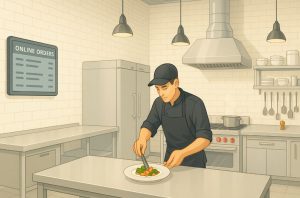
The food service industry has undergone a seismic shift in recent years, and nowhere is this more evident than in the emergence of the dark kitchen business. Also known as ghost kitchens or cloud kitchens, these delivery only kitchens operate without a storefront, dining area, or front-of-house team.
They exist purely to cook and fulfil online orders, usually placed through third-party delivery platforms such as Uber Eats, Deliveroo, or Just Eat.
Unlike traditional restaurants, a dark kitchen focuses solely on production and logistics. Located in lower-rent areas, such as industrial estates or repurposed commercial spaces, these kitchens are designed for efficiency and cost-effectiveness. Their success is measured not by footfall, but by how fast and accurately they can deliver food to customers.
How Does a Dark Kitchen Business Operate Behind the Scenes?
Understanding how a dark kitchen business works helps illustrate its appeal. Customers interact with the restaurant entirely online from browsing the menu and placing an order to leaving a review. Behind the scenes, chefs and kitchen staff receive the order via digital systems, prepare it, and package it for delivery.
The order is then handed off to a courier, who either works for the kitchen or through a third party platform. Everything happens without face-to-face interaction between the business and the customer. Multiple brands may even share the same kitchen, preparing entirely different cuisines under various brand names, all from one location.
Why Is a Dark Kitchen Business Suited to the Digital Age?
The rise of the dark kitchen business model coincides with shifting consumer habits. In the UK, more people are choosing food delivery over dining out, driven by convenience, time constraints, and increased use of mobile technology.
Dark kitchens are built to meet this demand. They allow food businesses to scale quickly, test new markets with minimal risk, and operate with lower costs than traditional brick-and-mortar restaurants. The use of delivery data, real-time customer reviews, and digital marketing has become central to how these kitchens thrive in a competitive space.
Why Are Dark Kitchen Businesses Growing in the UK?
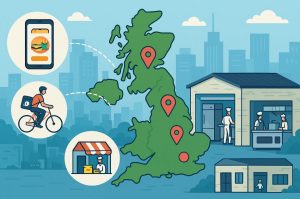
The UK presents fertile ground for the growth of dark kitchen businesses. In major cities like London, Leeds, and Manchester, high commercial rent, staff shortages, and evolving customer expectations have made traditional restaurants increasingly expensive to operate.
In contrast, a dark kitchen offers a lean and flexible alternative. Food entrepreneurs can launch a concept quickly without worrying about dining space or footfall. Established brands are also using dark kitchens to expand into new areas without opening a full-service restaurant.
Companies such as Deliveroo Editions and Karma Kitchen are accelerating this trend by offering shared spaces equipped with all the necessary facilities. These setups allow multiple food businesses to operate under one roof, dramatically lowering barriers to entry.
How Does a Dark Kitchen Business Function in Practice?
To better understand how a dark kitchen business functions, consider a real-world example. A food startup specialising in plant-based Asian meals wants to launch in London. Rather than investing in a traditional high street location, the brand rents a unit in a shared kitchen facility in Hackney.
Within a week, the business is listed on major food delivery apps. Orders start coming in, meals are prepared fresh, and delivery drivers distribute the food across the city. The brand receives instant feedback, adjusts its menu based on demand, and expands into new postcodes by replicating the model in other shared kitchens. All this happens without owning a single restaurant or hiring waitstaff.
What Role Does Technology Play in Dark Kitchen Businesses?
Technology is at the heart of every successful dark kitchen business. From cloud-based order management systems to AI-driven analytics, digital tools streamline operations and enhance the customer experience.
Online ordering systems allow for instant communication between the kitchen and delivery apps. AI can predict peak demand times, optimise stock levels, and suggest menu changes based on customer preferences. Real-time tracking enables better quality control, while digital marketing helps build brand recognition in a saturated market.
These systems help reduce waste, improve service speed, and make operations more transparent key factors in maintaining high standards in a delivery only environment.
What Are the Main Challenges of Running a Dark Kitchen Business?
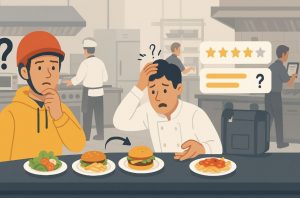
While a dark kitchen business offers many advantages, it also comes with its own set of challenges. One of the biggest concerns is visibility. Without a physical presence, these brands rely entirely on online exposure. This makes digital marketing, customer reviews, and user experience more critical than ever.
Another issue is dependence on third-party delivery platforms, which often take significant commissions. This can shrink profit margins and limit pricing flexibility. Additionally, food quality must remain high during transport, which demands excellent packaging and efficient delivery logistics.
Finally, legal and regulatory hurdles must be navigated. Businesses must be registered with local councils, follow health and safety protocols, and maintain strict hygiene standards. In shared kitchens, coordinating with other tenants can also pose operational complexities.
Which UK Brands Have Succeeded with the Dark Kitchen Business Model?
Several UK-based brands have successfully built their presence using the dark kitchen business model. London startup Taster is a notable example, operating multiple virtual brands from dark kitchens across Europe. Its success demonstrates how scalable and versatile this model can be.
Similarly, The Vurger Co., a plant-based fast food brand, uses dark kitchens to test demand in new markets before launching physical locations. Others, like Dirty Vegan, have gained popularity by focusing solely on delivery, thriving in areas where brick-and-mortar restaurants struggle due to high rents.
These businesses exemplify how dark kitchens can be used not only as launchpads but also as long-term operational models.
What Is the Future of Dark Kitchen Businesses in the UK?
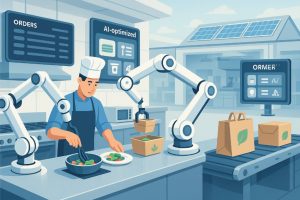
The future of dark kitchen businesses in the UK looks increasingly promising. As consumer habits continue to favour convenience, the demand for efficient, delivery-first food solutions is set to rise.
Emerging trends such as AI-based menu optimisation, automated cooking stations, and sustainable packaging are poised to further enhance the dark kitchen model. In addition, many businesses are now focusing on hyper-localisation tailoring menus and marketing strategies to specific neighbourhoods or postcodes.
Regulatory frameworks are also catching up. More local councils are implementing guidelines specific to dark kitchens, ensuring food safety and operational transparency. With the right balance of innovation and compliance, dark kitchens are expected to become a staple of the UK’s food landscape.
Conclusion
So, what is a dark kitchen business in today’s food industry? It’s a digitally driven, delivery-only kitchen that meets the demands of modern consumers with speed, flexibility, and innovation.
By cutting out the need for a physical storefront, dark kitchens offer food entrepreneurs a low-risk, scalable way to enter or expand in the competitive UK food market. While they come with challenges from marketing to regulatory compliance their potential is undeniable.
As technology advances and customer expectations evolve, the dark kitchen business is no longer just an alternative. it’s becoming the new standard for food service in the digital age.
FAQs About What Is a Dark Kitchen Business
Do you need a licence to start a dark kitchen business in the UK?
Yes, you must register your food business with your local council and adhere to food hygiene regulations and inspections.
How much does it cost to set up a dark kitchen business?
Startup costs can vary, typically ranging from £10,000 to £30,000 depending on location, equipment, and kitchen size.
Can you run a dark kitchen business from your home?
It is possible, but your kitchen must comply with commercial food hygiene standards and pass inspections by environmental health officers.
What equipment do you need for a dark kitchen business?
A standard setup includes ovens, refrigeration, food prep surfaces, hygiene stations, and digital ordering systems.
Are dark kitchens environmentally friendly?
That depends on the operator. Some use sustainable packaging and source ingredients locally, while others are still working to reduce their environmental impact.
Can one kitchen host multiple brands in a dark kitchen setup?
Yes. Many dark kitchen businesses run several virtual brands from one kitchen, targeting different customer segments with tailored menus.
What are the insurance requirements for a dark kitchen business?
Essential policies include public liability, employer’s liability (if you hire staff), and product liability insurance for food safety.






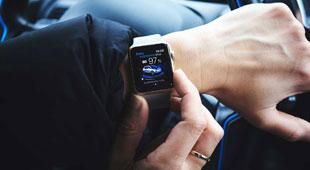

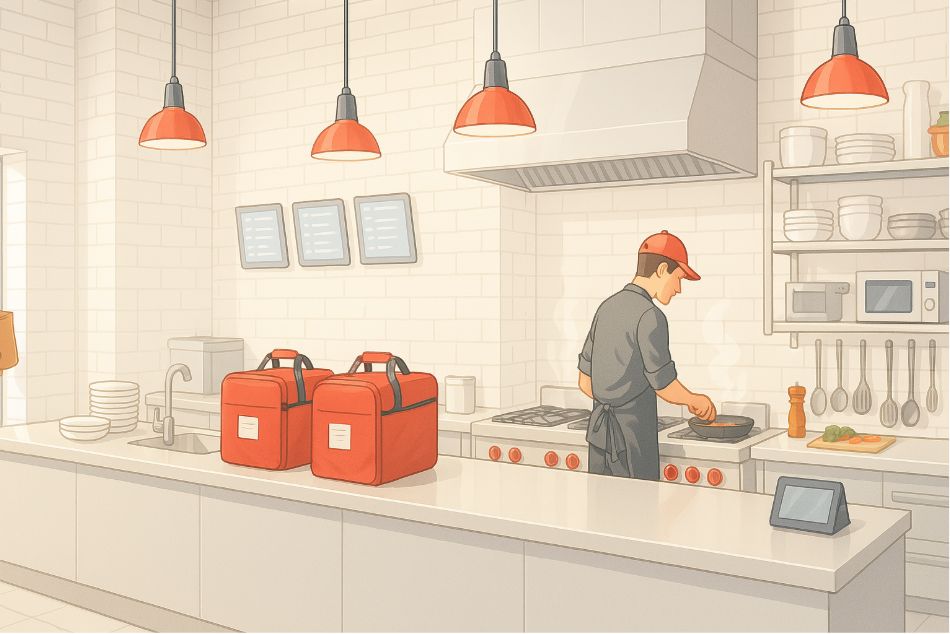
Leave feedback about this